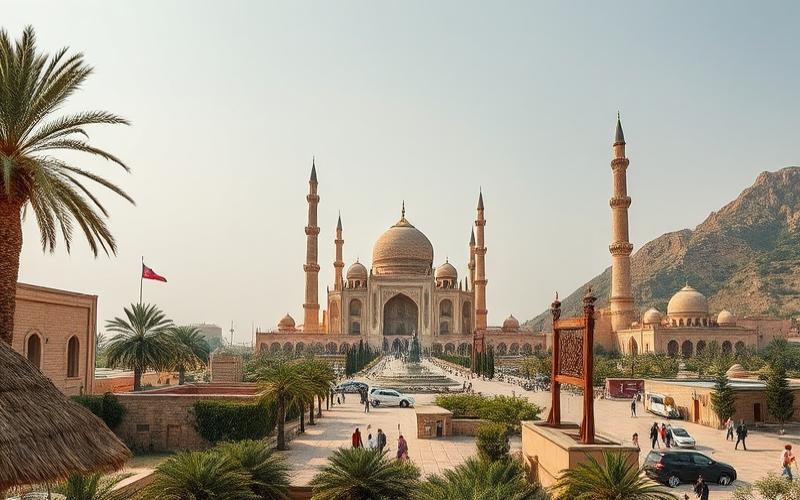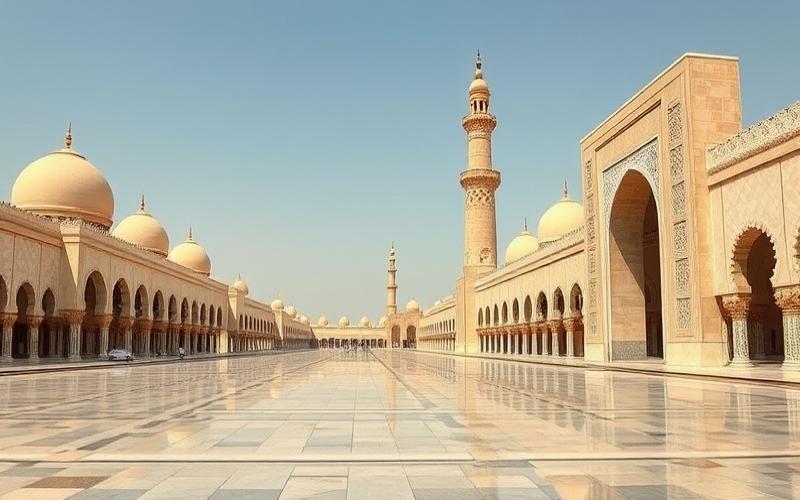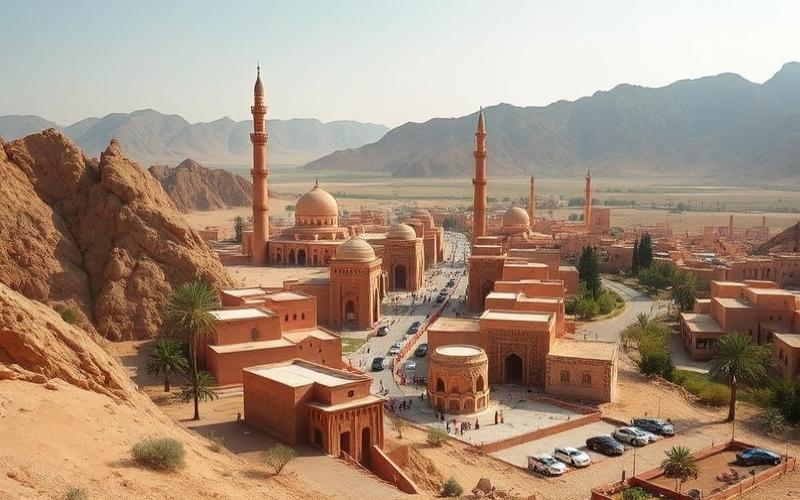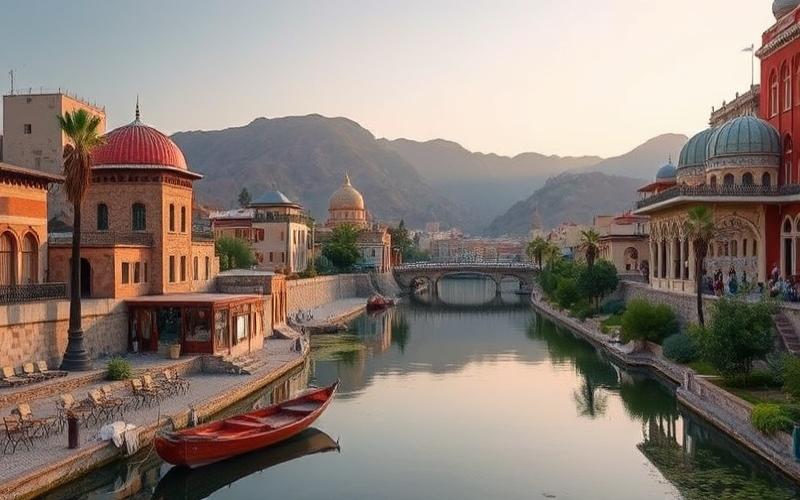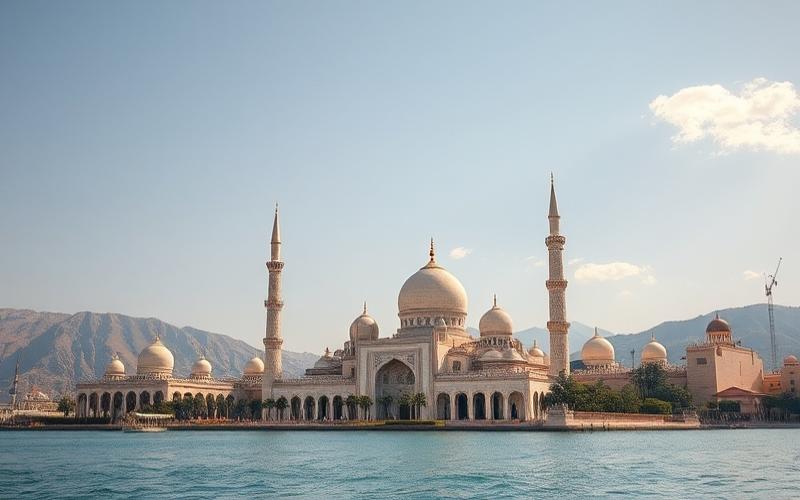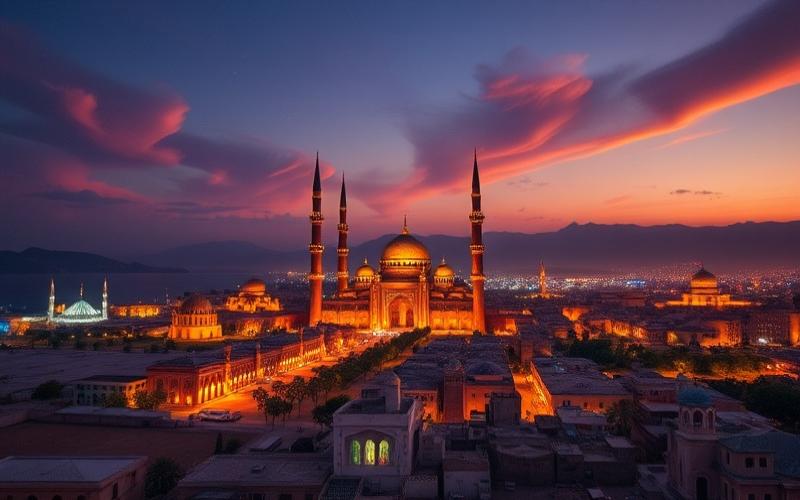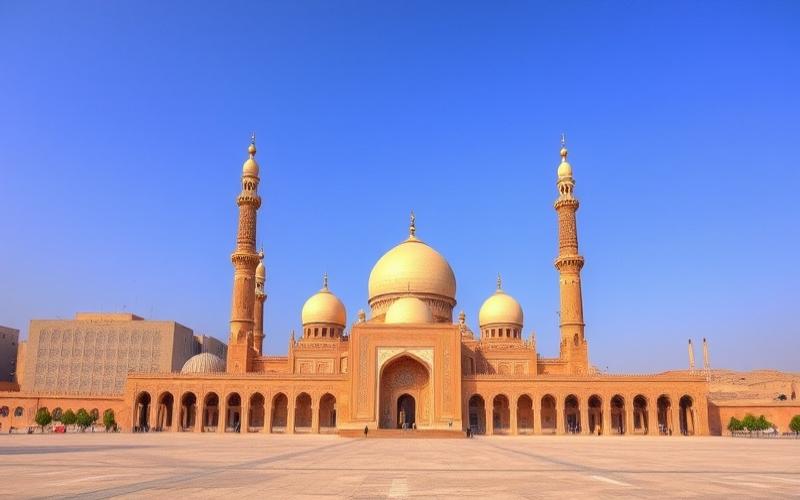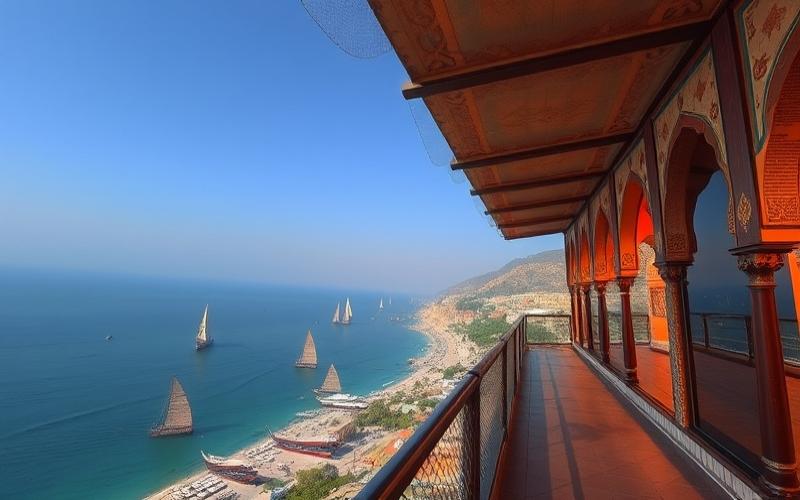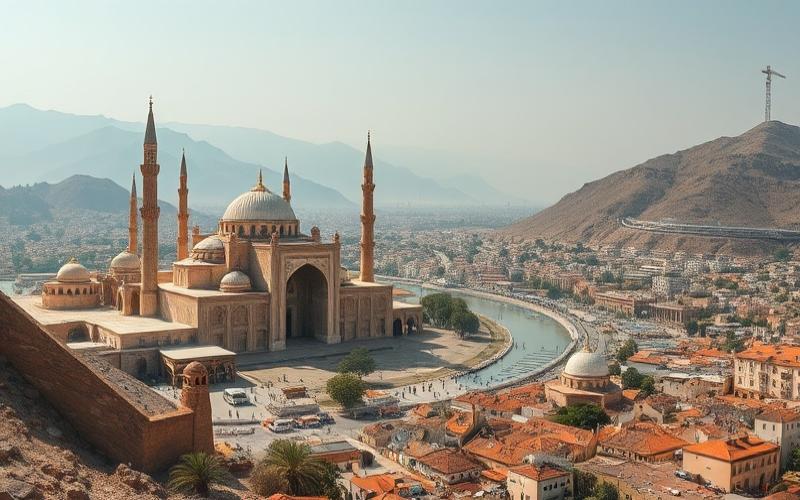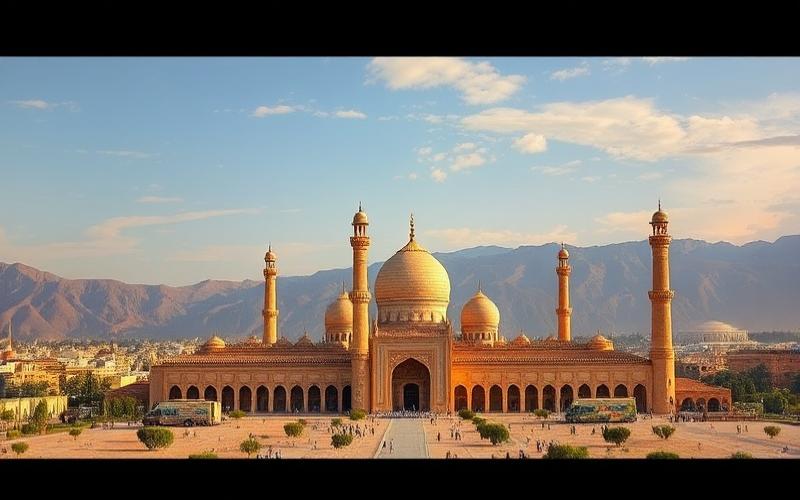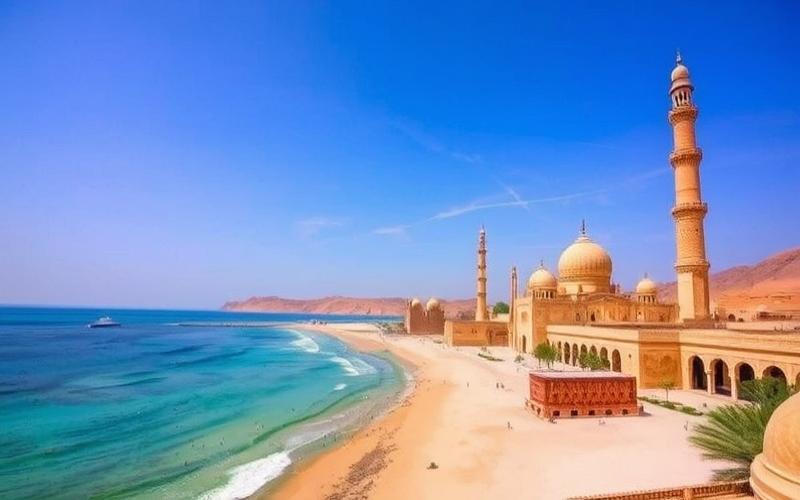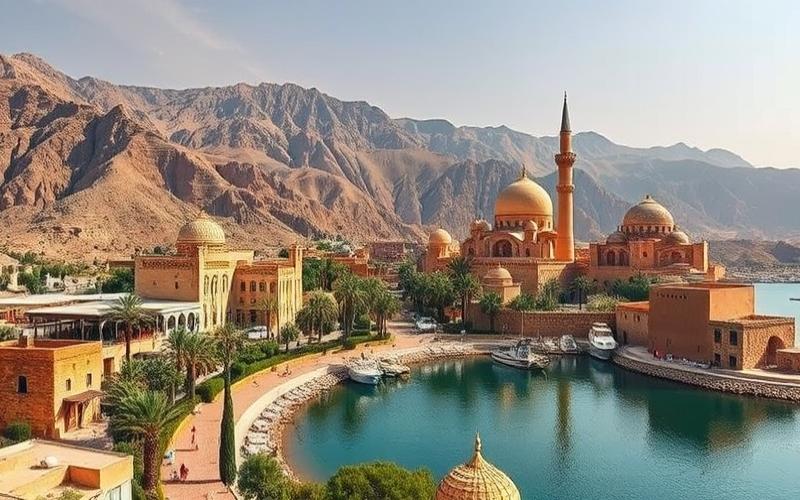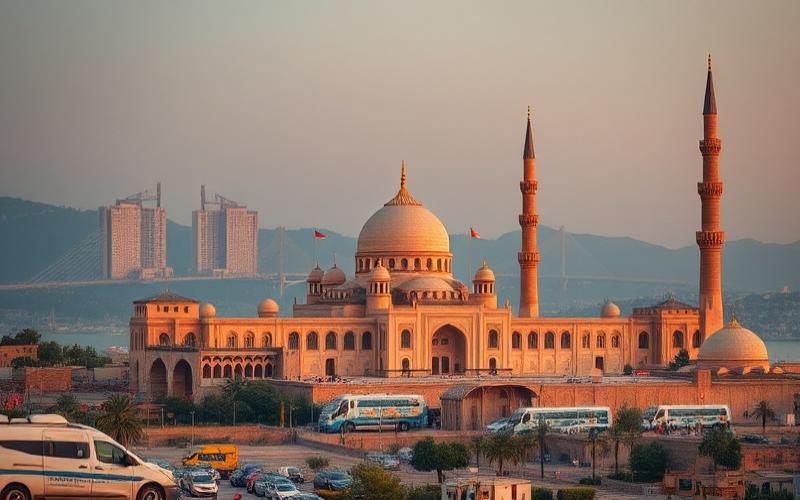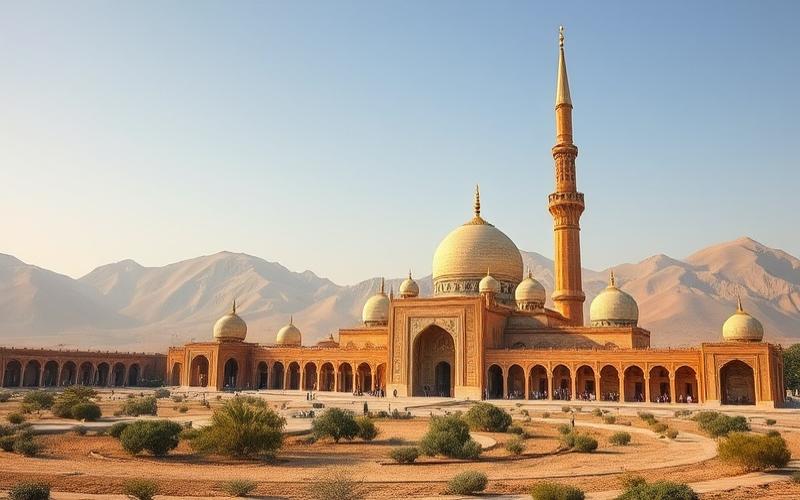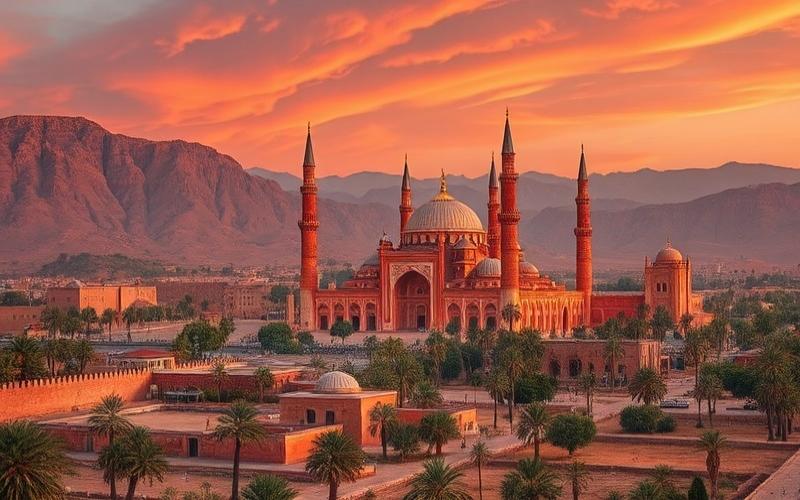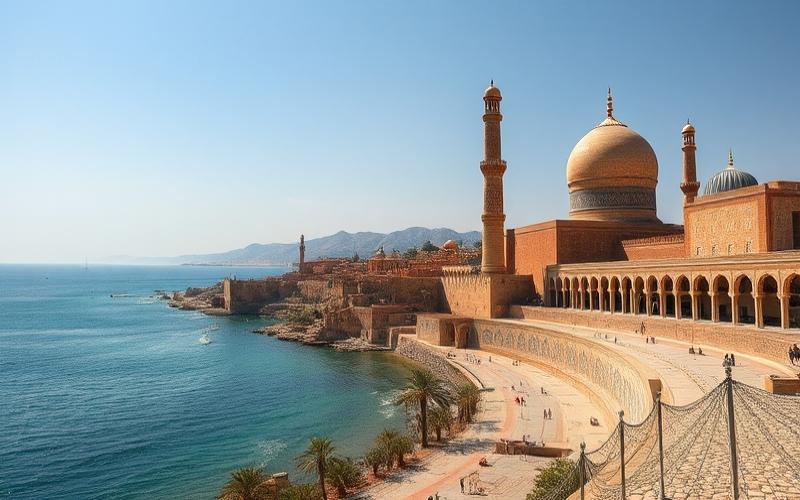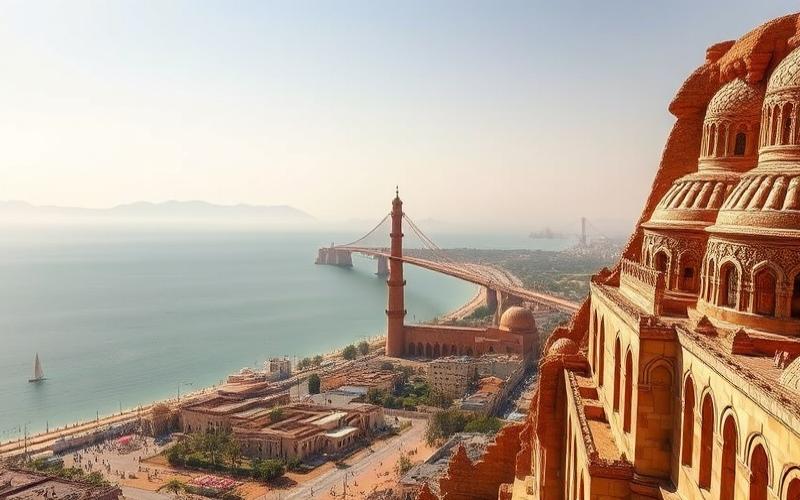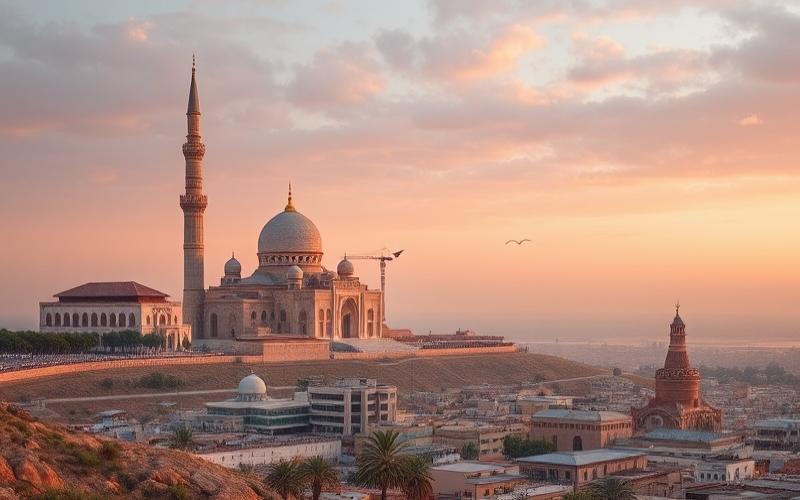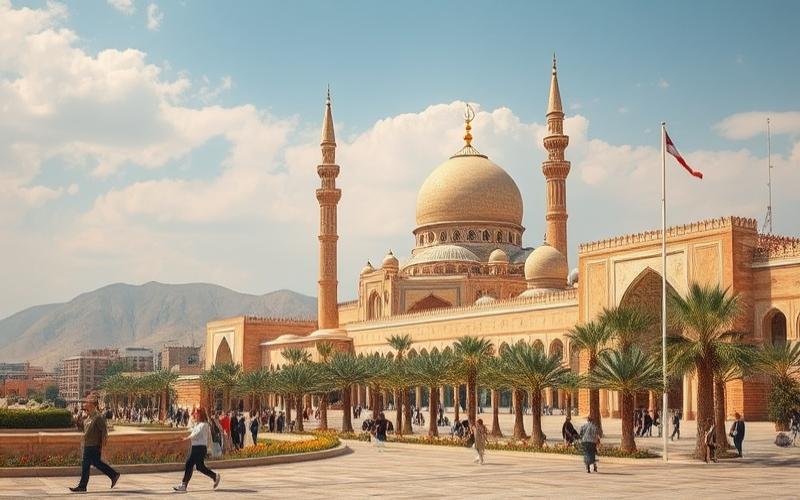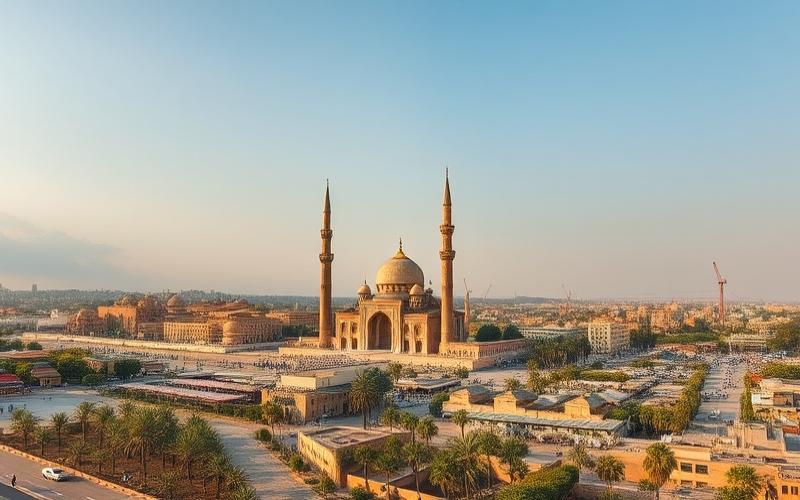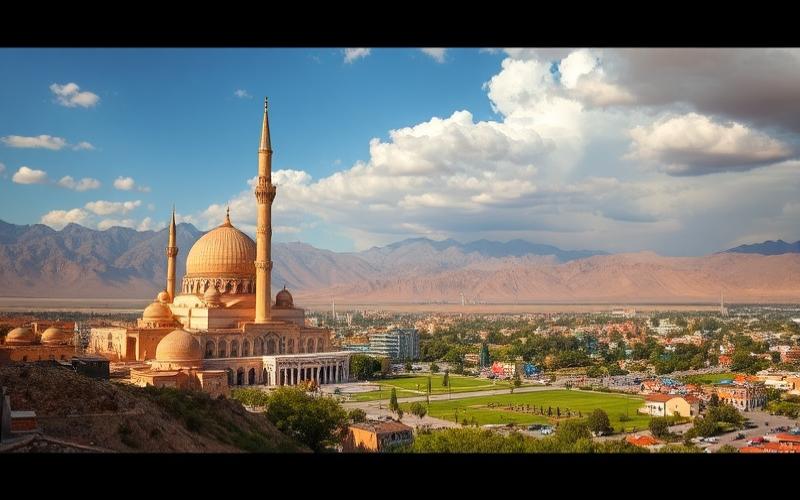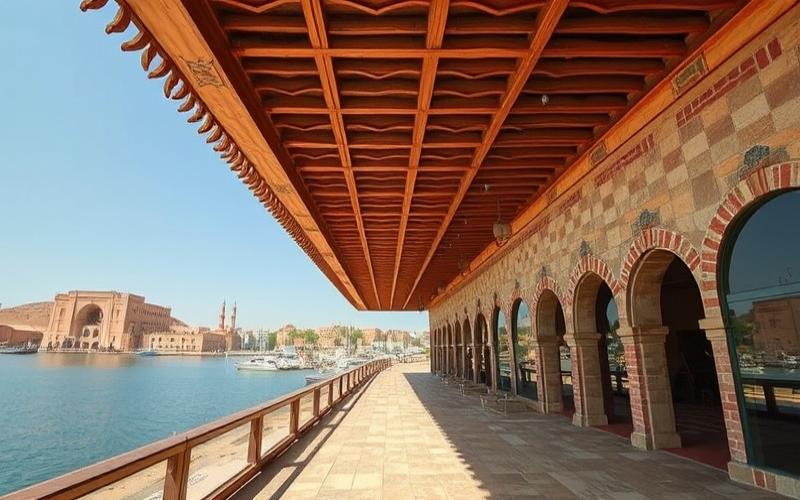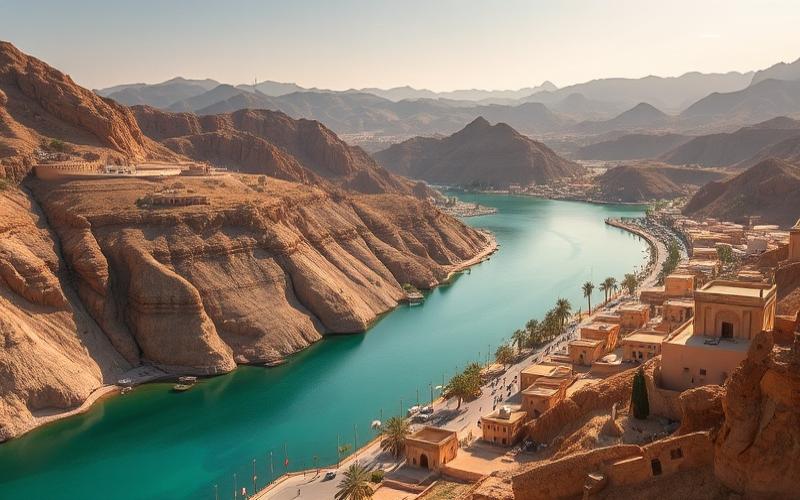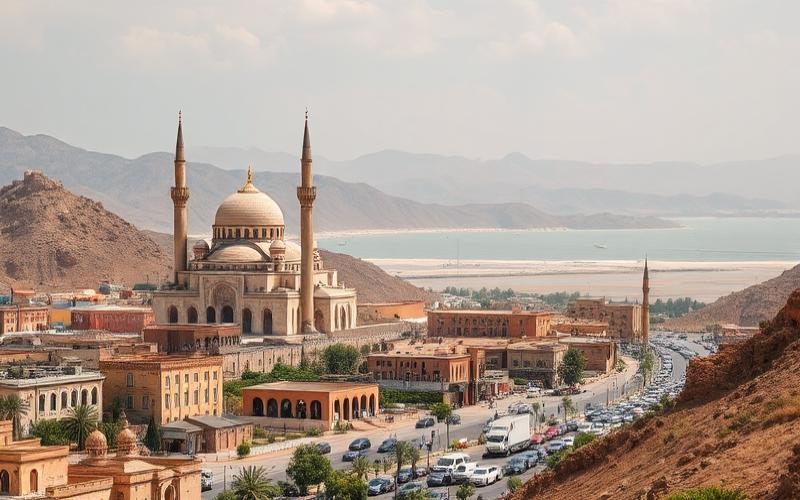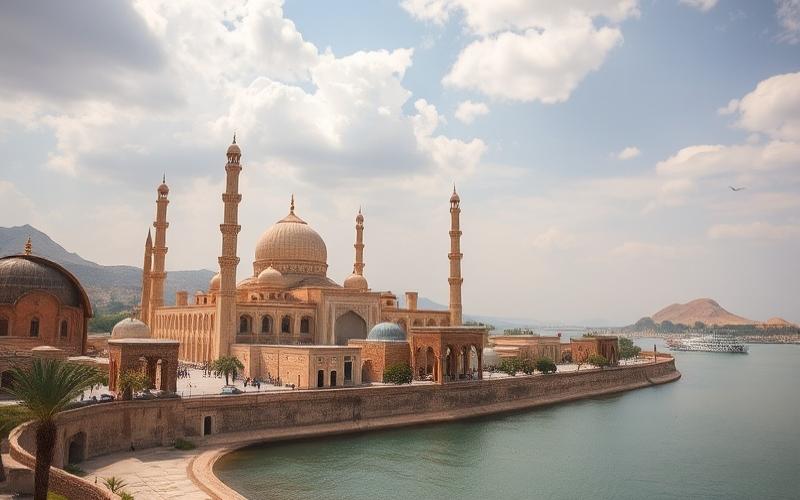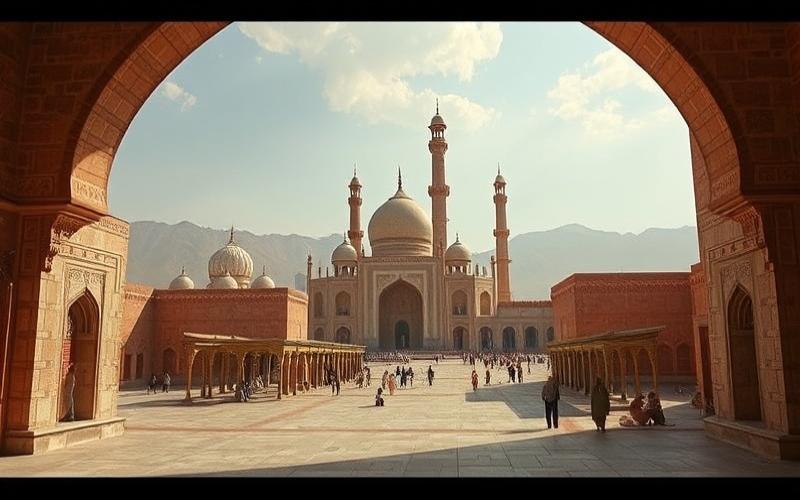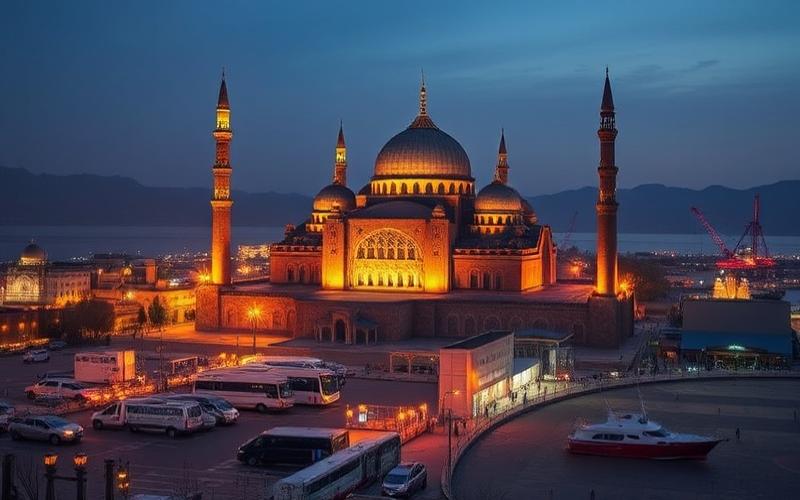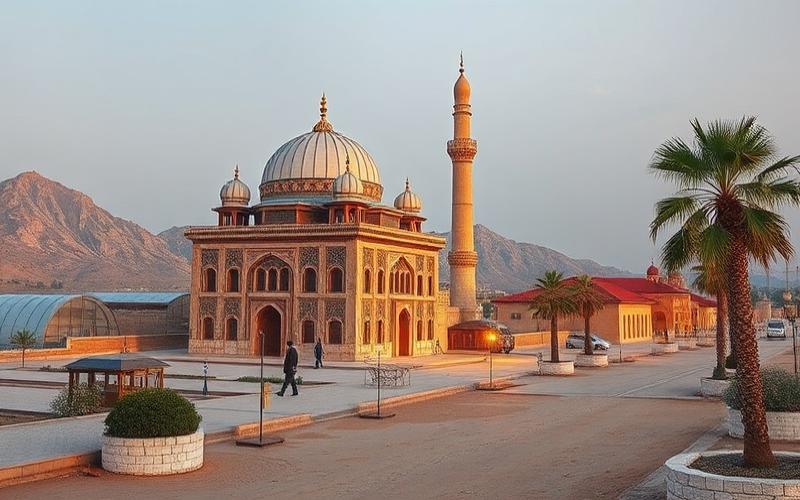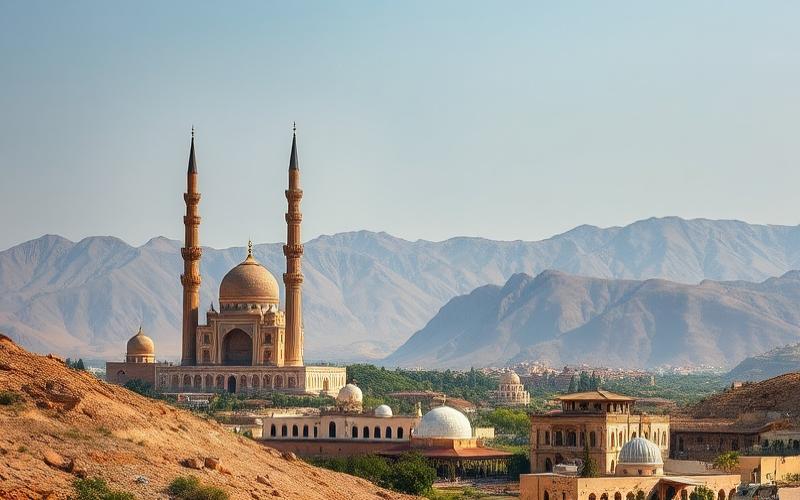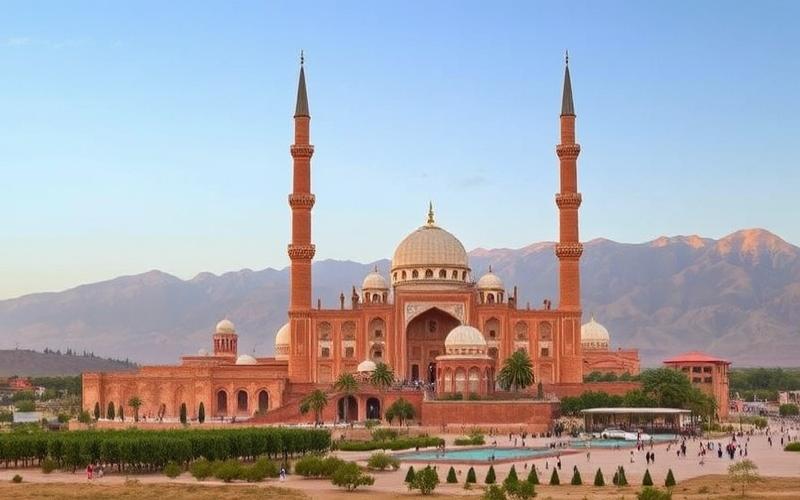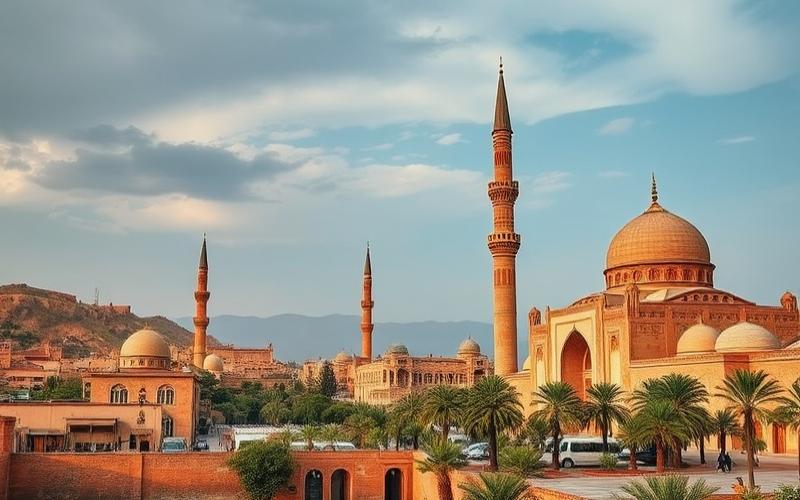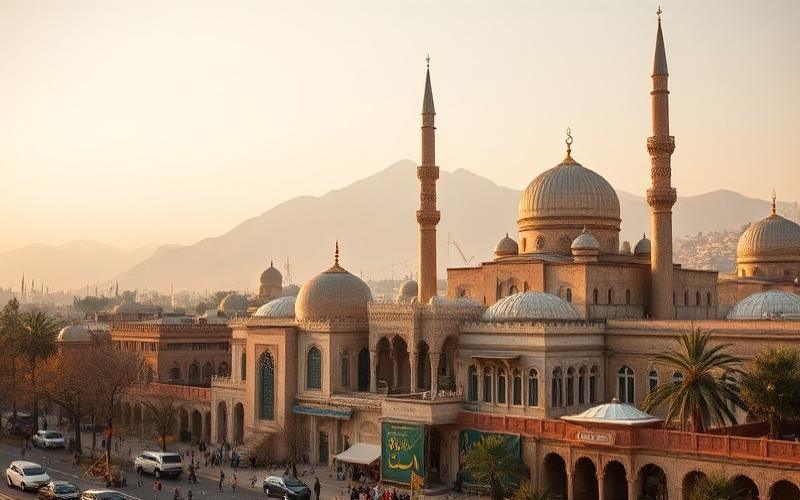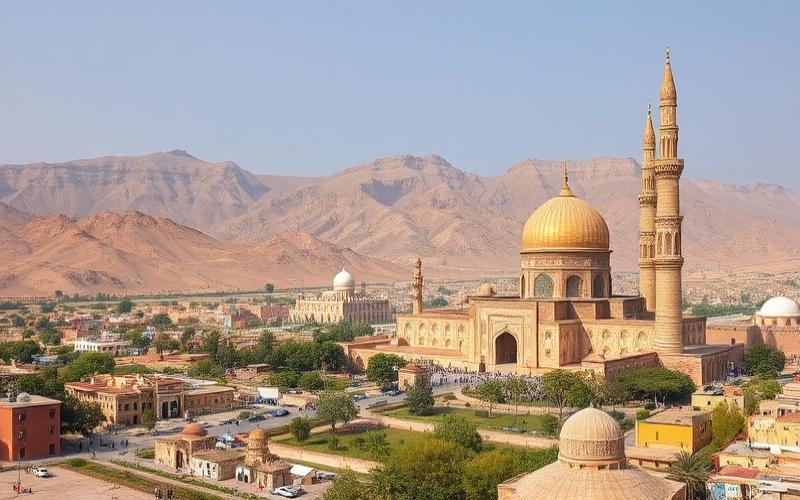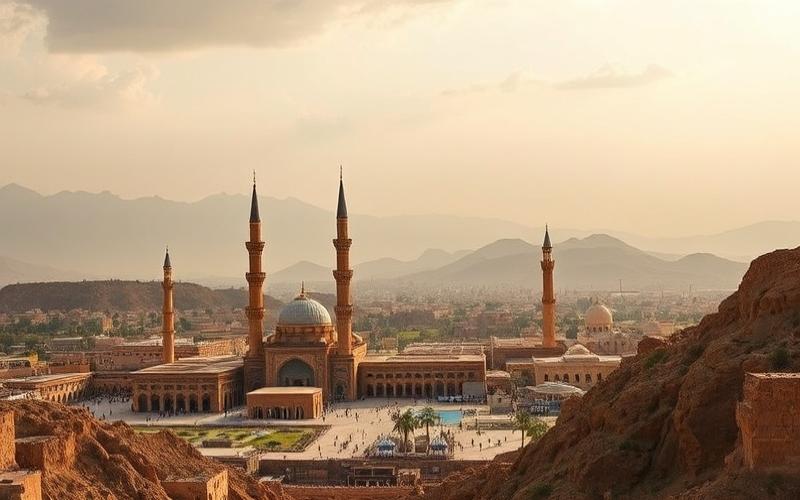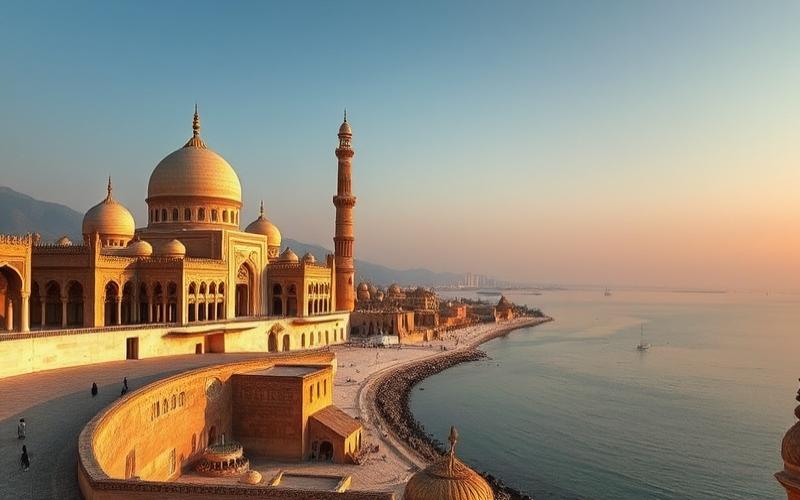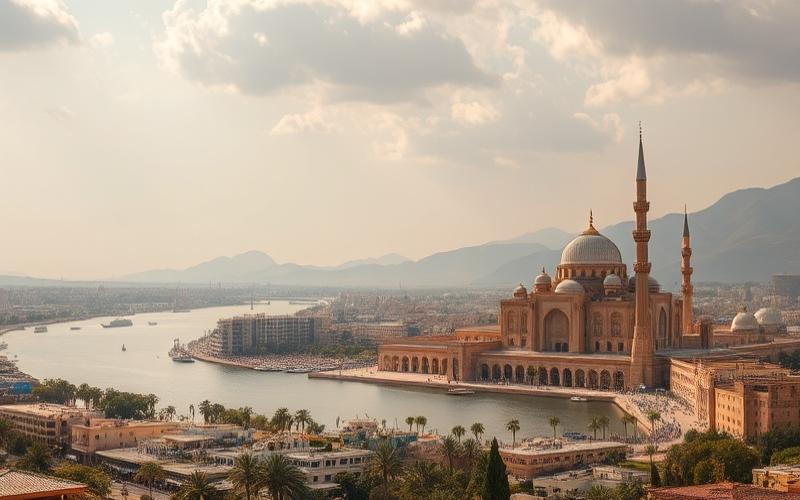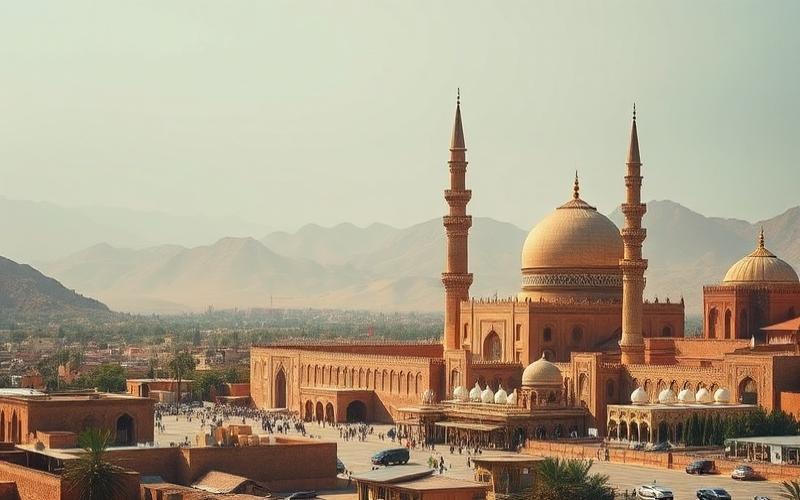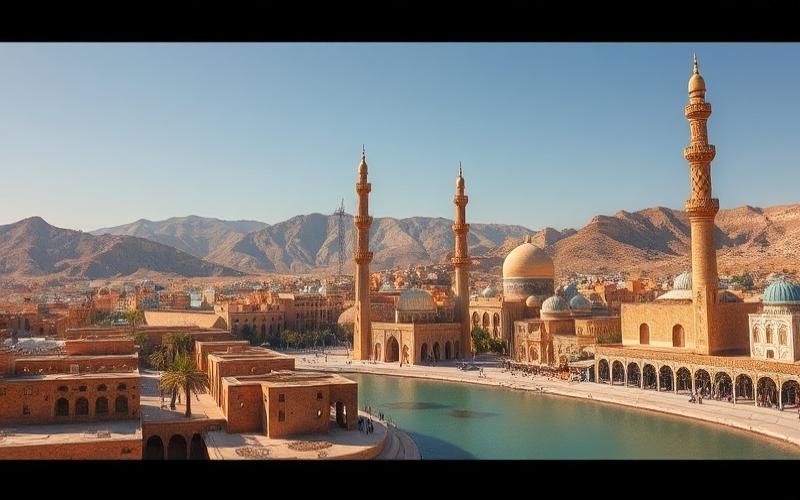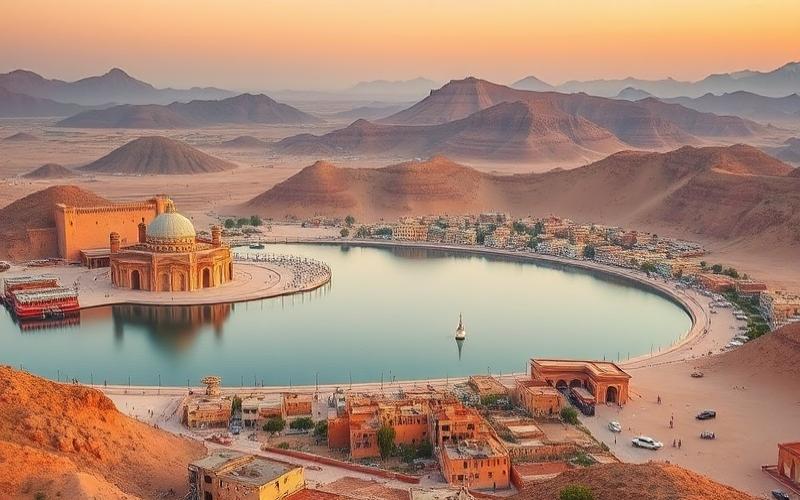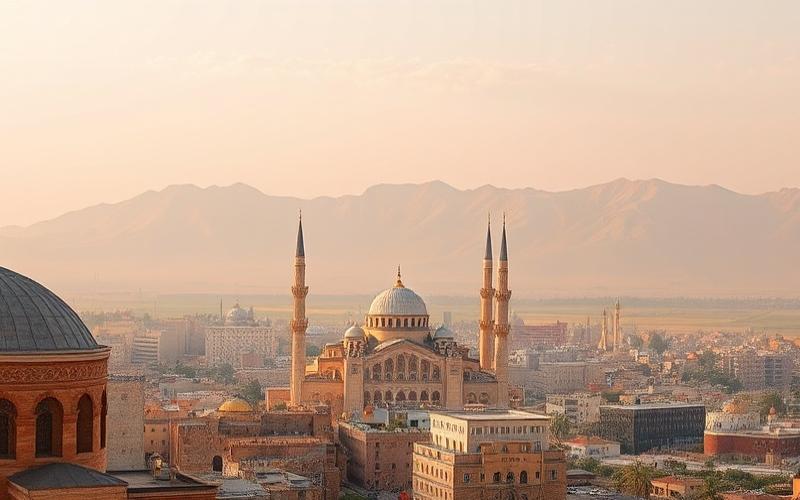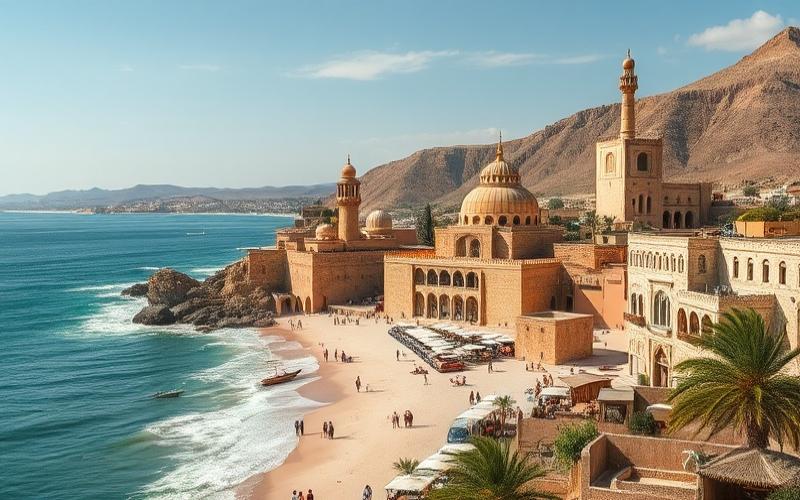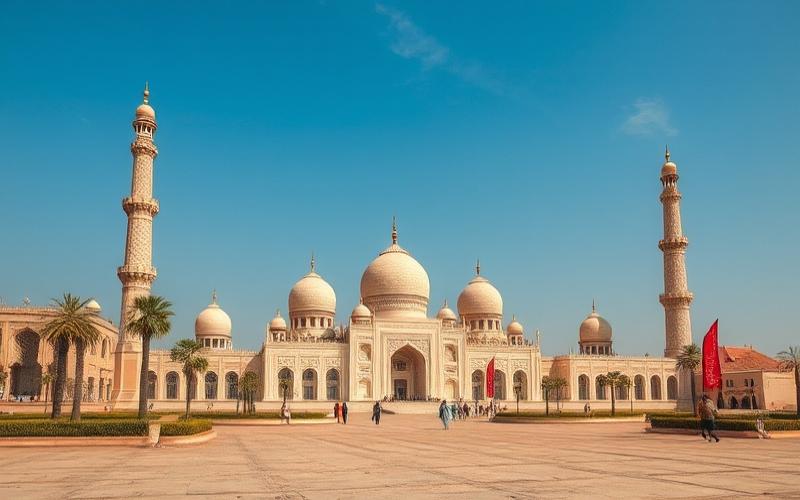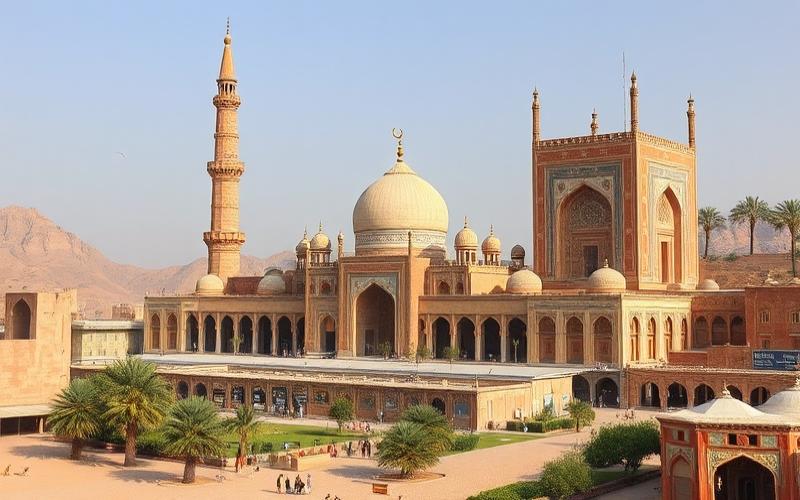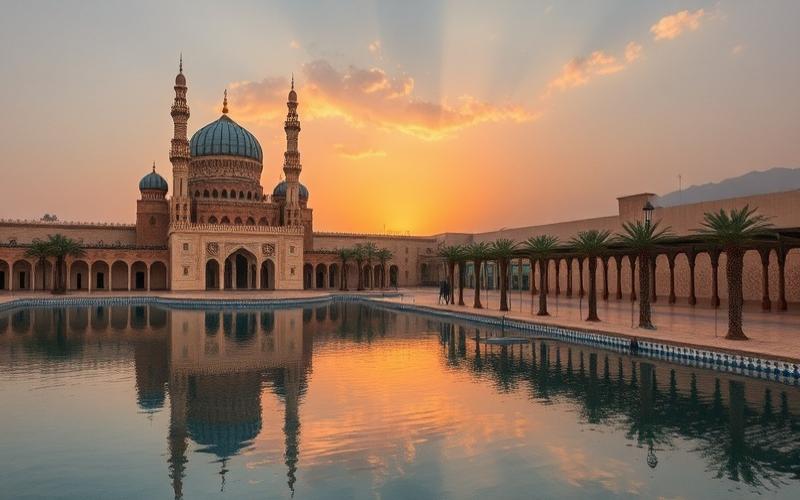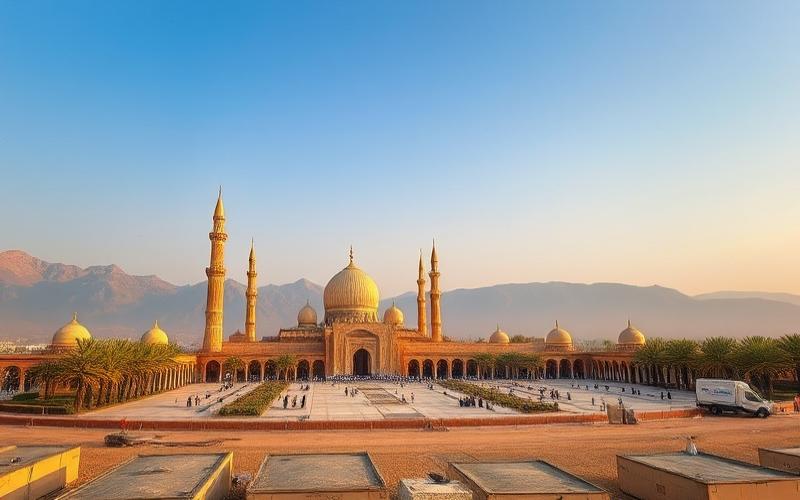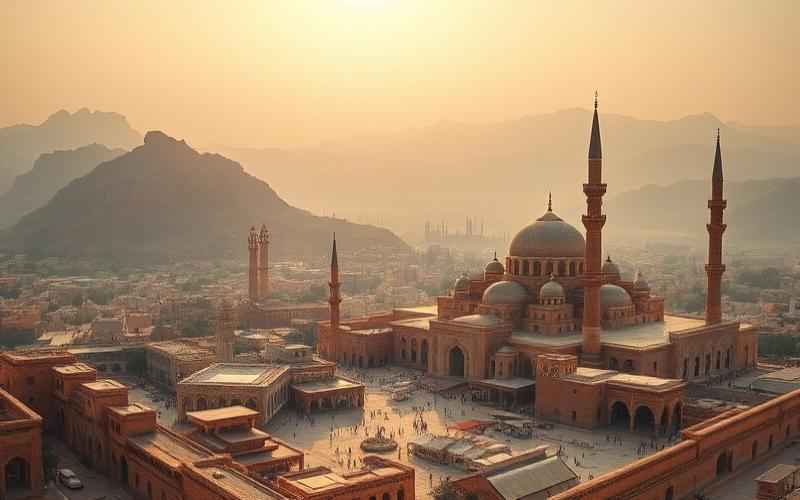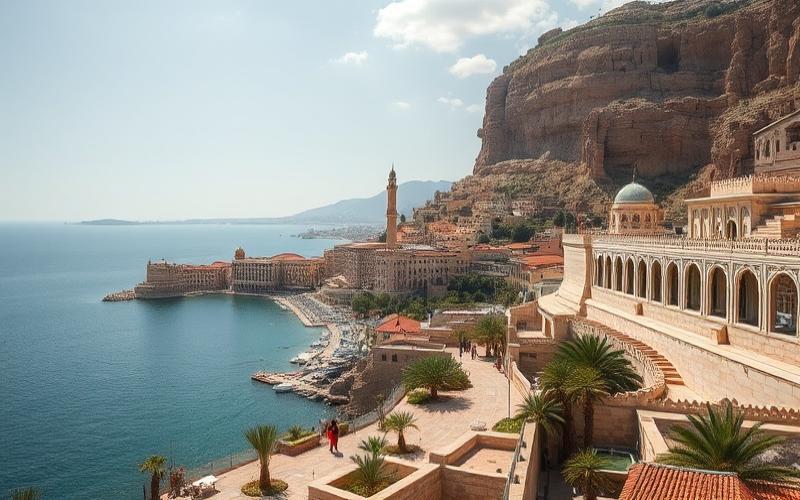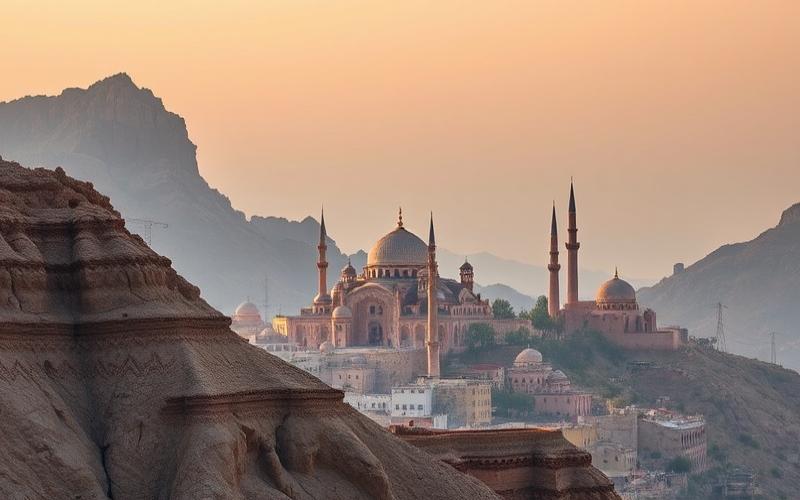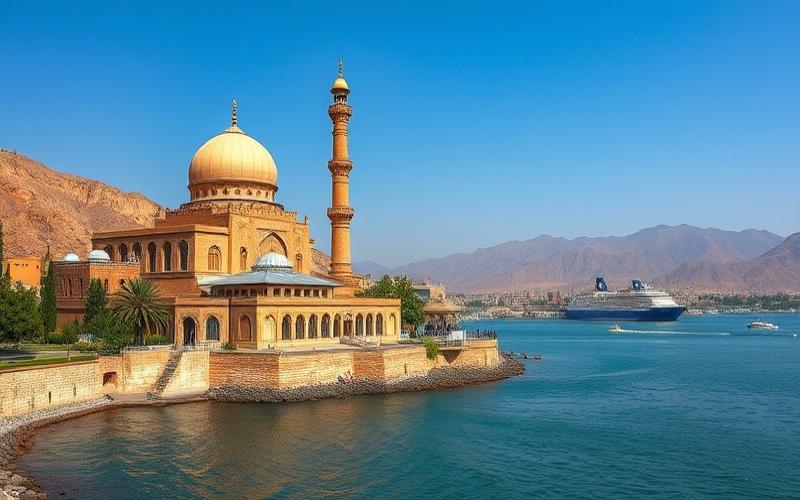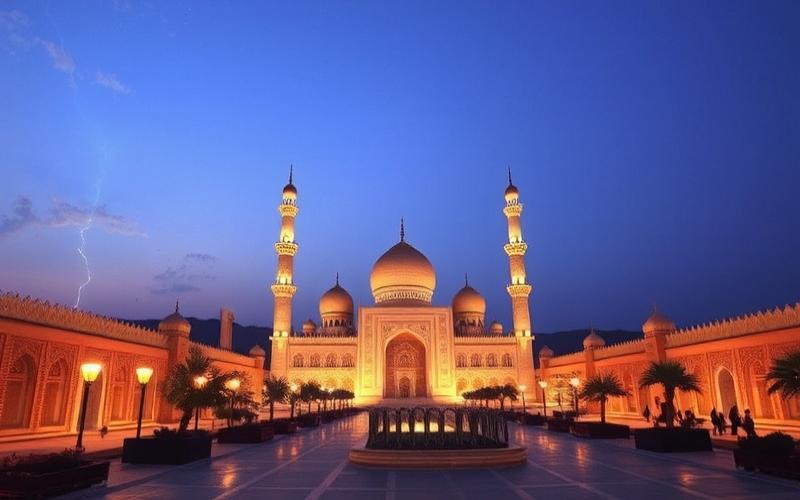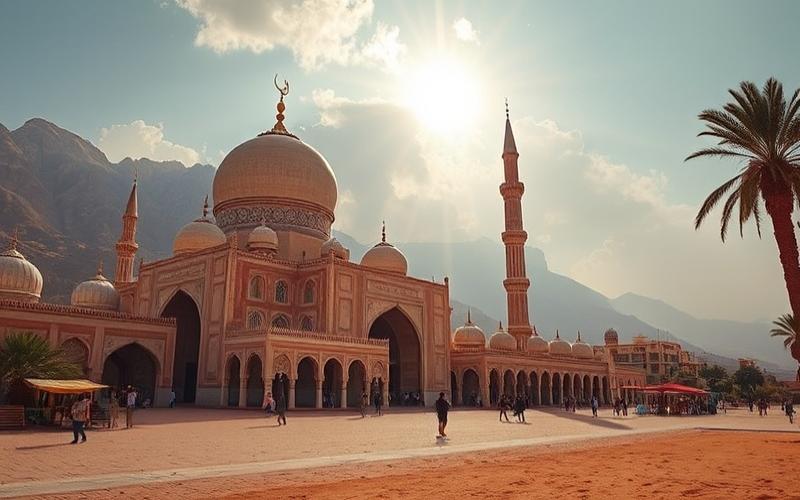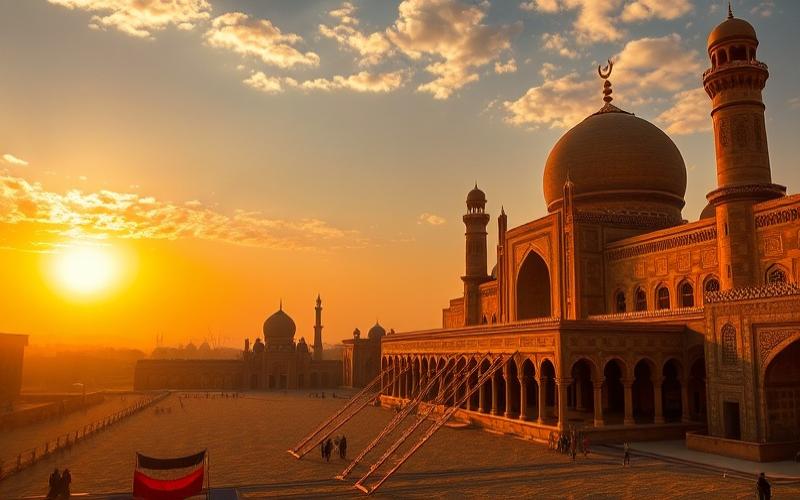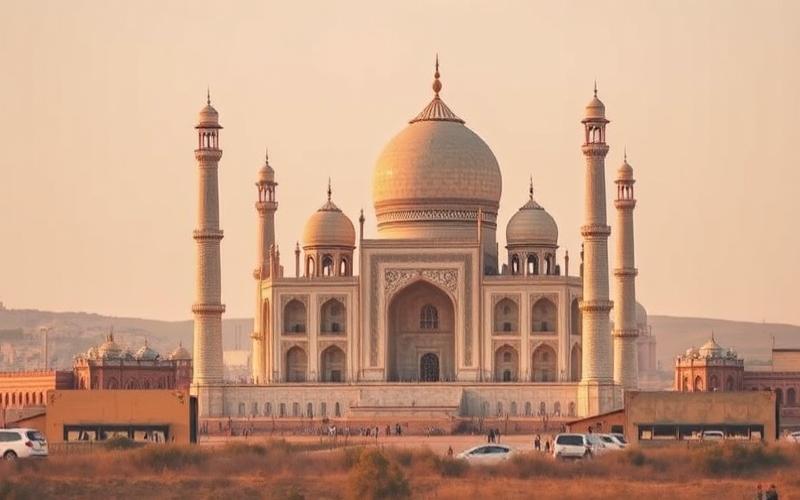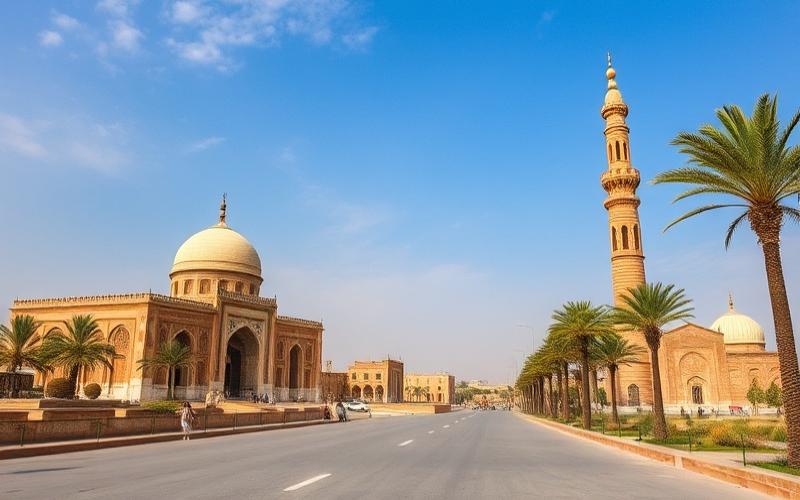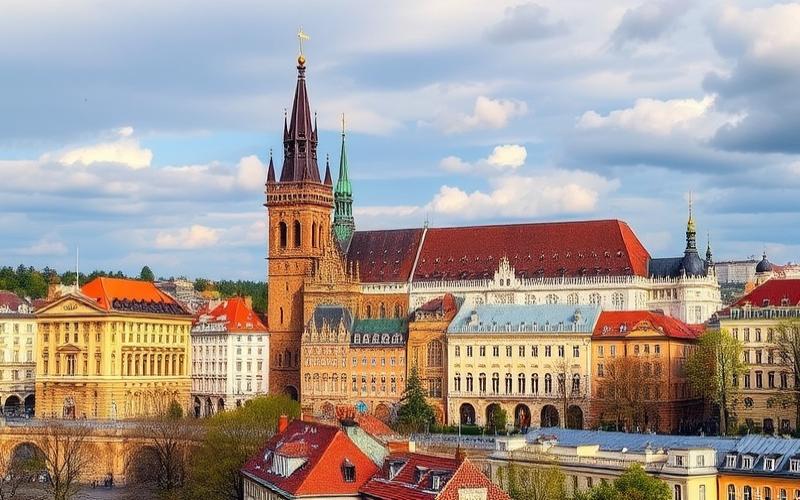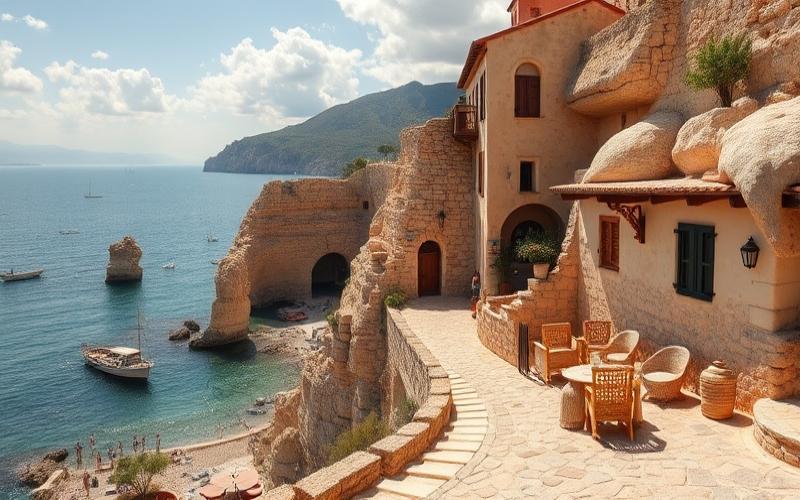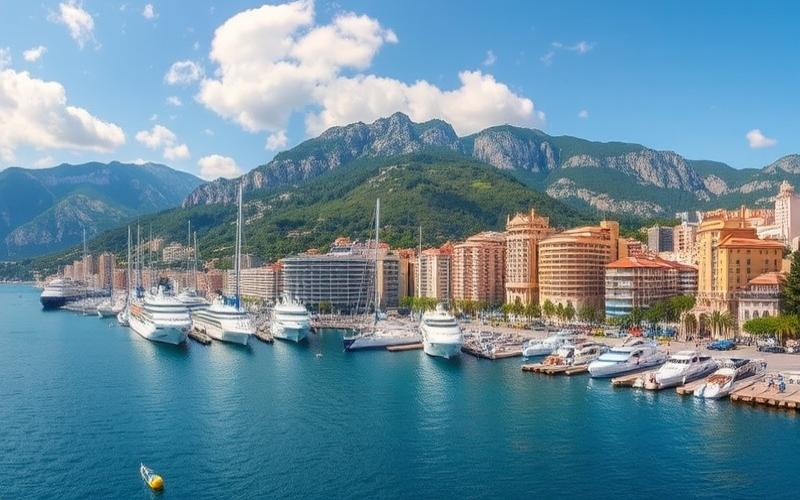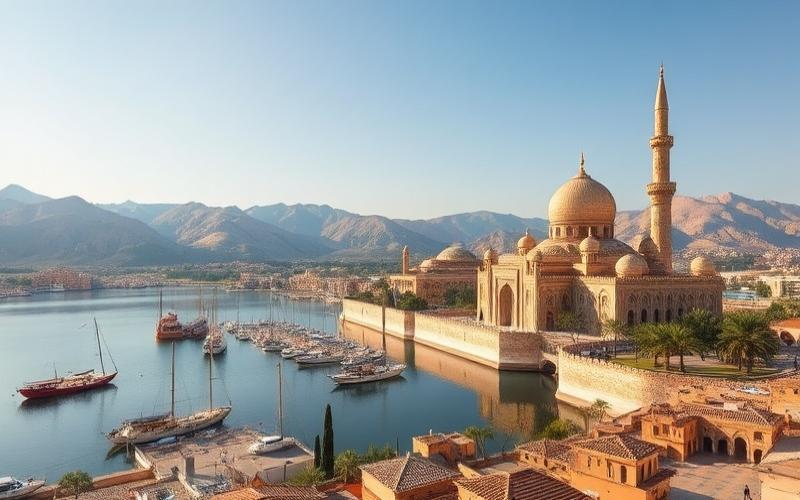
 Published on and written by Cyril Jarnias
Published on and written by Cyril Jarnias
Strategically located in the Persian Gulf, Bahrain is an archipelago that has always been a vital crossroads for trade and cultural exchange between East and West. Its history, rich with multiple influences, dates back thousands of years, blending tales of ancient civilization, conquests, and resistance.
From the ancient Dilmun civilization, recognized as one of the first major trading centers, to its evolution into a modern nation while preserving its unique heritage, Bahrain offers a fascinating mosaic of cultures and traditions.
Due to its strategic importance, the island has attracted numerous conquerors and visitors, leaving behind an immense cultural legacy that continues to shape contemporary Bahraini identity.
The Fascinating Origins of Bahrain
Ancient Bahrain’s geography is distinguished by its strategic position at the heart of the Persian Gulf, on the main maritime routes linking Mesopotamia to the Indus Valley. The island benefited from unique access to artesian springs, resulting from vast underground aquifers that surfaced, creating an environment conducive to palm groves and lush life despite the dry tropical zone.
Key Points on Ancient Geography:
- Central position in the Persian Gulf
- Trade routes between Mesopotamia and Indus
- Abundance of fresh water thanks to artesian springs
- Rich plant environment fostered by these natural resources
Bahrain was a major trading center from antiquity. Its role was central as a platform for regional economic redistribution between 2050 and 1750 BCE, establishing itself as Sumer’s main trading partner and later as a strategic bridgehead for Kassite Mesopotamia.
The earliest civilizations established on the island primarily include Dilmun, mentioned in Mesopotamian cuneiform records as early as the 3rd millennium BCE.
The Dilmun Civilization:
- Essential trading center linking Sumer (Mesopotamia) to the Indus Valley
- Presence confirmed by flint objects and pottery dating back approximately 5,000 years
- Strong mythological role in Sumerian narratives (creation myths, Epic of Gilgamesh)
Archaeological excavations have uncovered:
Major Remains:
- Qal’at al-Bahrain: tell composed of successive strata attesting to continuous human occupation since approximately 2300 BCE
- Residential, public, commercial, religious, and military structures discovered
- Ancient port capital of the Dilmun kingdom
Ancient Necropolises
Multiple necropolises testify to elaborate funerary practices throughout ancient history.
Trade Exchanges and Cultural Influences:
Over the centuries, Bahrain has undergone Assyrian, Babylonian, Sumerian, Greek, and Persian influences; its commercial prosperity shaped its material traditions (imported ceramics), religious beliefs (cult of Enki), and urban architecture.
The very name Bahrain, meaning “the two seas” (al-Baḥrayn) in Arabic, highlights this natural duality between the surrounding saltwater sea and the surfacing underground freshwater tables. This name reveals an identity linked not only to its maritime role but also to its exceptional water wealth, perceived as a divine gift or mythical origin by the Sumerians who associated Dilmun both with a real trading partner and an idyllic eternal paradeisos.
| Element | Archaeological / Historical Evidence | Significance for Bahrain |
|---|---|---|
| Artesian Springs | Fossil reservoirs – palm groves | Hydric identity (“two seas”) |
| Qal’at al-Bahrain | Tell stratigraphy | Ancient urban & port center |
| Necropolises | Monumental tombs | Complex funerary practices |
| Imported Ceramics | Discoveries during excavations | Trade exchanges |
Main Historical Contributions Cited:
“Decision-making center of the Land of Dilmun… regional economic platform… main trading partner…”
“The two main islands therefore benefited until a recent period from a ‘second sea,’ the imprint of which has been preserved in the very name of the country (‘al-Baḥrayn,’ ‘the two seas’)”
“Qal’at al-Bahrain is a typical tell… stratigraphy attests to constant human presence from approx. 2300 BCE until the 16th century”
Good to Know:
Bahrain, once a trading pivot of the Persian Gulf, was home to the Dilmun civilization, essential for trade between Mesopotamia and the Indus Valley; its necropolises and architectural remains testify to rich cultural exchanges. The name Bahrain, meaning “two seas,” reveals its historical identity deeply connected to maritime routes and external influences.
Bahrain’s Colonial Journey
The earliest foreign influences and presences in Bahrain date back to antiquity, when the island occupied a strategic position at the crossroads of Persian Gulf trade routes. Before the colonial era, Bahrain already had contacts with civilizations such as the Assyrians, Babylonians, and Achaemenid Persians. These early exchanges shaped a cosmopolitan identity and a social fabric blending different cultural influences.
From the early 16th century, the arrival of European powers marked a turning point. The Portuguese, attracted by control of maritime trade routes, seized Bahrain in 1521. Their presence was manifested by the construction of fortifications, notably Bahrain Fort, and attempts at religious conversion. They sought to establish their economic and military dominance, but their authority was contested by local populations and Arab dynasties. The Portuguese were eventually expelled from the territory in the mid-17th century, partly thanks to a coalition of local forces and the intervention of the Persian Empire.
After the Portuguese departure, Bahrain came under Persian domination until 1782. The Persian rulers, while imposing their authority, contributed to strengthening the Arab-Persian character of the island, relying on a predominantly Shia population. Despite this influence, Bahrain’s religious specificity, marked by a strong Shia presence, predates this period and results from a religious history unique to the region.
In 1783, the Al Khalifa family, of Sunni faith, overthrew the Persian dynasty and established an independent emirate. However, Persia continued to claim the island. This instability attracted the attention of the United Kingdom, eager to secure its commercial and strategic interests in the Persian Gulf, particularly in the face of competition from other European powers and the rise of maritime piracy.
British interference materialized with the signing of the 1820 peace and protection treaty between Bahrain and the United Kingdom. This treaty, renewed several times, granted the British oversight of the emirate’s foreign policy and obligated them to defend it against any external aggression.
| Period | Power | Main Impact |
|---|---|---|
| 1521–1602 | Portugal | Maritime control, forts, conversion attempts |
| 1602–1783 | Persia | Indirect administration, Shia cultural influence |
| 1820–1971 | United Kingdom | Protectorate, modern administration, infrastructure |
During the British period, several significant events marked the political and social life of Bahrain:
- 1820: Signing of the first protection treaty with the United Kingdom.
- 1868: The British arbitrated the end of Bahrain’s domination over Qatar.
- 1932: Discovery of oil, which reinforced British interest and accelerated the country’s modernization.
- 1940–1971: Bahrain became a British administrative and military center in the region.
The British established a modernized administration, introducing new infrastructure, schools, and hospitals, but limited local political development. The emir retained internal authority, but foreign policy remained under British control. Administrative reforms, although contributing to economic growth, sometimes heightened tensions between the majority Shia communities and the ruling Sunni dynasty.
List of major colonial policies and reforms:
- Establishment of a judicial system inspired by the British model
- Development of infrastructure (roads, hospitals, schools)
- Regulation of oil production
- Surveillance and repression of nationalist movements
Relations between colonial forces and local leaders oscillated between cooperation and tensions. The Al Khalifa, while benefiting from British support to maintain their authority, had to contend with internal protest movements, particularly among Shia populations and oil sector workers. Colonial influence contributed to rapid economic transformation but also generated inequalities and social frustrations.
From the 1950s onwards, the emergence of nationalist movements and international pressure for decolonization pushed Bahrain toward independence. After the announcement of the British withdrawal in 1968, Bahrain declared its independence in 1971.
Main lasting effects of colonialism:
- Accelerated modernization of infrastructure and economy
- Consolidation of the Al Khalifa dynasty’s power
- Maintenance of social and sectarian divisions
- Emergence of a national identity marked by cultural diversity and the memory of struggles for autonomy
Bahrain’s colonial journey reveals a complex history of resistance, adaptation, and transformation, the legacy of which continues to shape the country’s national identity and contemporary social dynamics.
Good to Know:
Even before the colonizers, Bahrain was influenced by civilizations such as the Phoenicians and Assyrians, thus paving the way for Portuguese and Persian ambitions; under the British, Bahrain became a strategic center in the Gulf due to its geographical position and oil wealth, which accelerated its modernization while influencing its path to independence.
Evolution and Transformation: Bahrain Through Time
| Period | Key Events and Transformations | Social, Cultural, and Economic Changes |
|---|---|---|
| Dilmun Empire (c. 3000–800 BCE) | Bahrain is the heart of the Dilmun civilization, a major trading center linking Mesopotamia to the Indus Valley. Qal’at al-Bahrain is identified as the probable capital. Decline begins around 1600 BCE, then absorption by the Babylonian and Assyrian empires. | Intensive trade (pearls, wood, precious metals), construction of temples and thousands of burial mounds. Extensive cultural influence in Eastern Arabia. Identity based on maritime trade and agriculture (date palms). |
| Islamic Period (from the 7th century) | Conversion to Islam in the 7th century under the influence of early Muslim missionaries. In the 10th century, takeover by the Qarmatians, who established a utopian republic before being defeated by the Abbasids in the 11th century. Return to orthodox Islam with local dynasties (Uyunids). | Profound religious transformation: transition from polytheism to Shia then Sunni Islam depending on the era. Society structured around religious and tribal communities. Development of prosperous agriculture thanks to African slaves under the Qarmatians. |
| Portuguese Empire (16th century) | Portuguese occupation for 80 years in the 16th century to control trade in the Persian Gulf before a return under Persian then Arab domination in the 18th century. | Introduction of European military innovations; reinforcement of Bahrain’s strategic role in international trade; beginning of rivalries between regional powers for control of the archipelago. |
| Modern Era up to the 19th Century | Competition between local Arab clans, recurrent Persian influence then British protectorate in 1816 until independence in 1971. | Tribal society marked by internal struggles; development of a distinctly Bahraini identity despite external influences; maintenance of an economy based on pearling. |
| 20th Century: Discovery of Oil | Discovery of oil in the 1930s radically transforming Bahraini economy and society. | Rapid transition from a traditional to a modern industrialized economy; accelerated urbanization; progressive economic diversification. |
| Political and Economic Reforms (since 2000) | Adoption of a Constitution in 2002 establishing a constitutional monarchy with a partially elected Parliament; economic reforms aimed at reducing dependence on oil via the development of financial services, tourism, and new technologies. | Limited but real political opening: increased participation of women in politics, relative press freedom compared to regional neighbors. Profound social changes: multicultural society due to strong Asian immigration; rise of a pro-democracy movement during the Arab Spring in 2011 followed by a security crackdown. |
| Current Geopolitical Context | Bahrain today enjoys a key strategic position in the Gulf thanks notably to its close alliance with Washington since Manama has hosted the U.S. Fifth Fleet since |
Good to Know:
Bahrain has been an influential cultural crossroads, with the Dilmun Empire participating in ancient trade routes and its rapid transformation after the discovery of oil in 1932, reinforcing its unique geopolitical position. Reforms undertaken since the 2000s have enabled economic diversification and modernization of its political system while preserving its distinctive cultural and social heritage.
Disclaimer: The information provided on this website is for informational purposes only and does not constitute financial, legal, or professional advice. We encourage you to consult qualified experts before making any investment, real estate, or expatriation decisions. Although we strive to maintain up-to-date and accurate information, we do not guarantee the completeness, accuracy, or timeliness of the proposed content. As investment and expatriation involve risks, we disclaim any liability for potential losses or damages arising from the use of this site. Your use of this site confirms your acceptance of these terms and your understanding of the associated risks.

